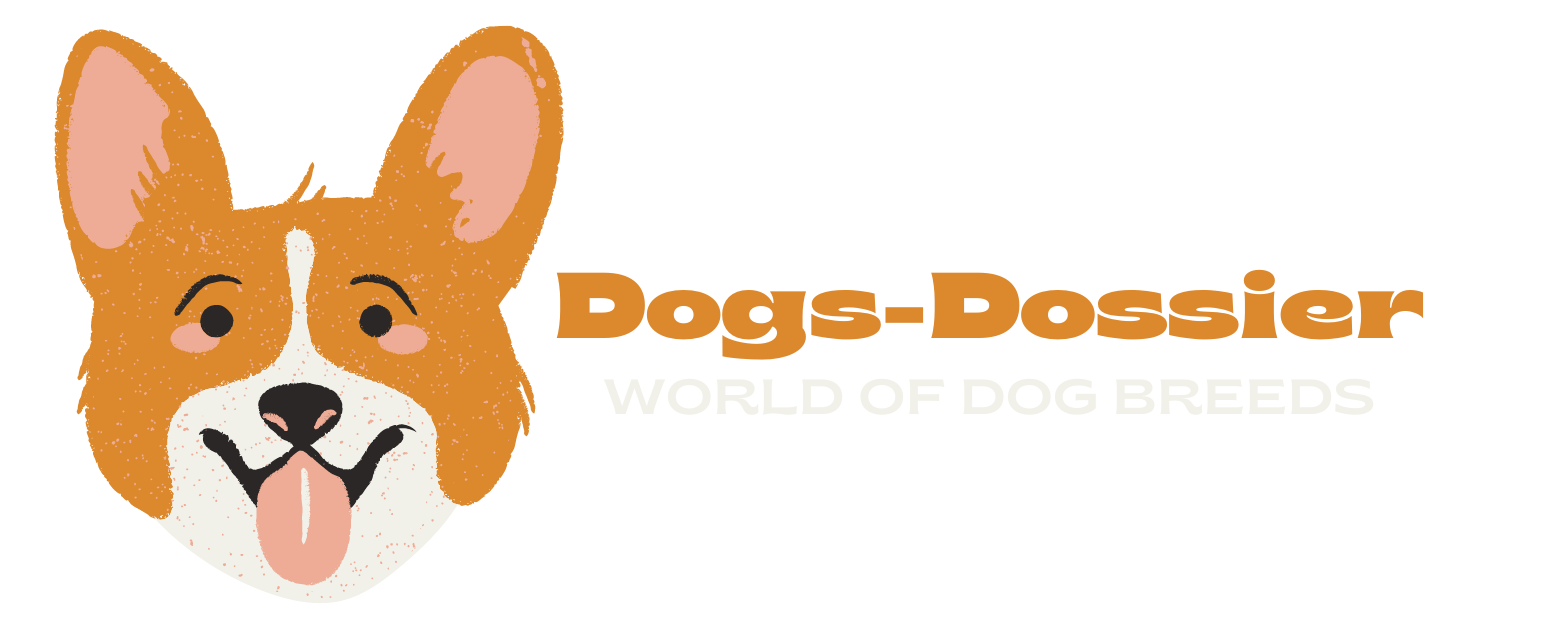How to Show a Chihuahua Dominance: Understanding and Implementing Dominance in Chihuahua Training
Establishing dominance over your Chihuahua is crucial for a harmonious relationship between you and your furry friend. Unlike popular belief, showing dominance is not about being aggressive or harsh; it’s about setting boundaries and being a reliable leader. This guide will help you understand how to assert dominance in a way that builds trust and respect.
Understanding Dominance in Dogs
What is Dominance?
Dominance in dogs refers to a social hierarchy where the dog looks up to the owner as the leader. It’s about guidance and control, ensuring that your Chihuahua knows who makes the rules.
Myths About Dominance
Many people think that dominance means being the “alpha” in a way that involves intimidation or force. This is a misconception. True dominance is about being a consistent and fair leader, not about instilling fear.
Why Dominance Matters in Dog Training
Establishing dominance helps prevent behavioral issues and creates a balanced relationship where your Chihuahua feels secure and understood. It makes training easier and ensures your dog respects your authority.
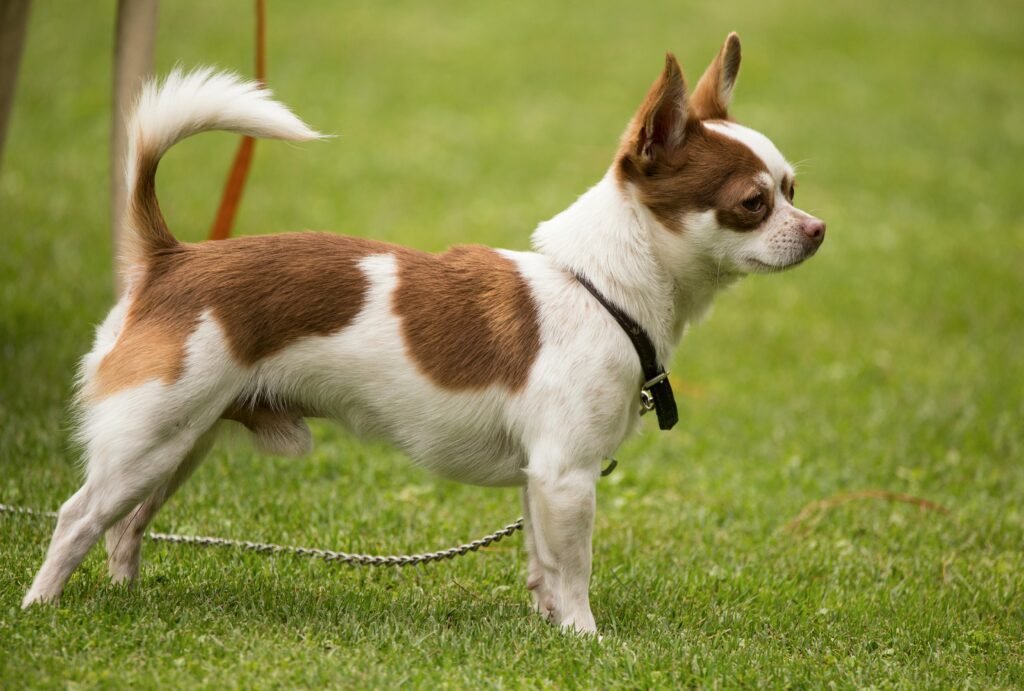
How to Show a Chihuahua Dominance
To show a Chihuahua dominance, establish yourself as the pack leader through consistent training and clear boundaries. Use positive reinforcement to reward good behavior and correct bad habits promptly.
Maintain structured routines for feeding, playtime, and walks, ensuring you control these activities.
Communicate effectively with firm but gentle commands, and socialize your Chihuahua to different environments and people. Patience and consistency are key to building trust and respect.
Chihuahua-Specific Behaviors
Common Behavioral Traits of Chihuahuas
Chihuahuas are known for their feisty, confident, and sometimes stubborn nature. They are loyal and affectionate but can exhibit dominance if not properly trained.
Signs of Dominance in Chihuahuas
Watch for behaviors such as growling, snapping, guarding resources, and not obeying commands. These are signs your Chihuahua might be trying to assert dominance over you.
How Chihuahuas Differ from Other Breeds
Chihuahuas are small but mighty. Their size can make it easy to overlook dominant behaviors, but their strong personalities mean they need clear and consistent leadership just like larger breeds.
Building a Strong Foundation
Establishing Yourself as the Pack Leader
Establishing yourself as the pack leader involves taking control of your Chihuahua’s daily routines and setting clear boundaries. Start by consistently guiding their feeding times, play sessions, and walks.
Use firm yet gentle commands to instruct and correct behavior, rewarding compliance with positive reinforcement. Be consistent in your rules and expectations to avoid confusion. Show confidence and calmness in your interactions, as dogs can sense and react to your energy.
Spend quality time bonding with your Chihuahua, building trust and respect through affectionate yet authoritative leadership.
Building Trust with Your Chihuahua
Building trust with your Chihuahua requires patience, consistency, and positive interactions. Spend quality time with your dog through play, training, and gentle petting, ensuring they feel safe and loved.
Use positive reinforcement, such as treats and praise, to reward good behavior. Establish a consistent routine for feeding, walks, and bedtime to create a sense of security.
Avoid harsh corrections or punishments, as these can damage trust. Instead, use calm and assertive guidance to correct unwanted behaviors. Over time, your Chihuahua will come to see you as a reliable and trustworthy leader.
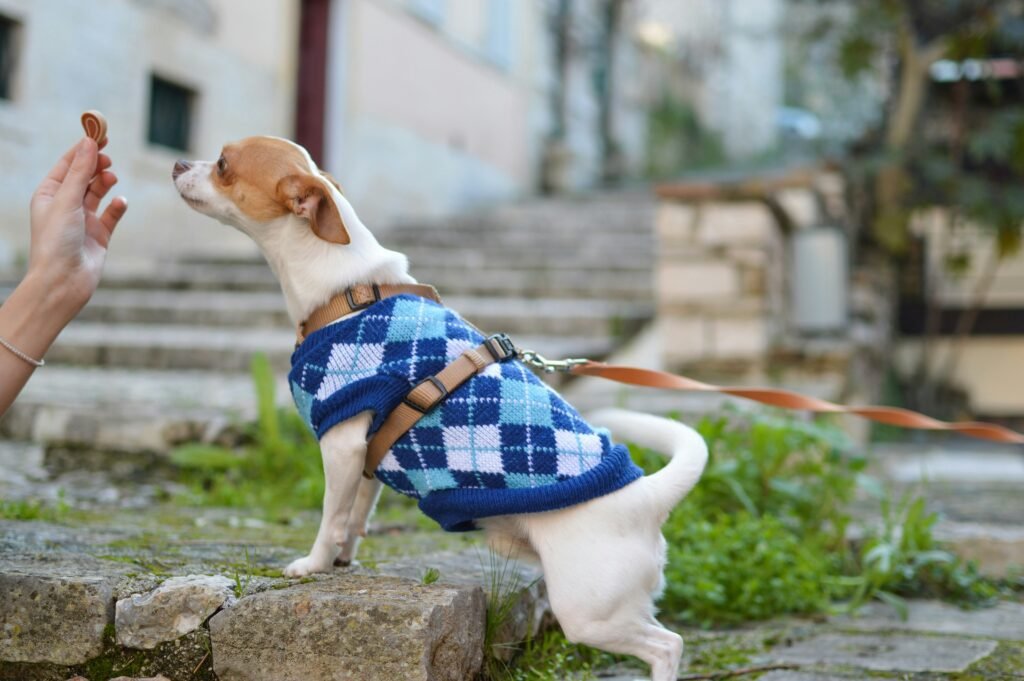
Training Techniques to Establish Dominance
Positive Reinforcement
Rewarding good behavior with treats, praise, or playtime reinforces the idea that following your commands leads to positive outcomes.
Setting Boundaries
Clearly define what is acceptable and what isn’t. Use firm but gentle corrections to discourage unwanted behaviors.
The Importance of Commands
Teach basic commands like sit, stay, come, and down. Consistent use of these commands establishes your role as the leader.
Effective Communication with Your Chihuahua
Understanding Body Language
Understanding body language is crucial for effectively communicating with your Chihuahua. Pay attention to their posture, tail position, and ear movements.
A relaxed, wagging tail and calm posture usually indicate a happy and content dog, while a stiff body, raised hackles, or a tucked tail can signal fear or aggression.
Notice their facial expressions: relaxed eyes and a slightly open mouth show comfort, while intense staring, bared teeth, or growling indicate discomfort or aggression.
By observing these cues, you can better understand your Chihuahua’s feelings and respond appropriately, strengthening your bond and ensuring effective communication.
The Role of Vocal Commands
Use a calm, assertive voice when giving commands. Avoid shouting or sounding angry, as this can create fear rather than respect.
Non-Verbal Cues
Non-verbal cues such as hand signals can be very effective. Combine these with vocal commands for more effective communication.
Daily Practices to Reinforce Dominance
Structured Feeding Times
Structured feeding times are essential for establishing dominance and routine with your Chihuahua. Feed your dog at the same times each day to create a predictable schedule.
This consistency helps your Chihuahua understand that you control the resources, reinforcing your role as the leader. Ensure that you decide when feeding begins and ends, not your dog.
Avoid free-feeding, where food is left out all day, as this can lead to dominance issues and overeating.
Structured feeding times also help with house training and maintaining a healthy weight. This routine fosters discipline and trust between you and your Chihuahua.
Controlled Playtime
Initiate and end play sessions on your terms. This helps your Chihuahua understand that you are in charge of all activities.
Walks and Exercise Routines
Lead your Chihuahua during walks. Don’t let them pull or dictate the direction. This reinforces your leadership and provides necessary physical and mental stimulation.
Dealing with Behavioral Issues
Addressing Aggression
Addressing aggression in your Chihuahua requires calm, consistent, and assertive actions. First, identify the triggers that cause aggressive behavior, such as certain people, animals, or situations.
Use positive reinforcement to reward calm behavior and gradually desensitize your Chihuahua to these triggers.
Avoid using physical punishment, as this can increase aggression and fear. Instead, redirect their focus with commands or distractions like toys and treats. Ensure your Chihuahua gets plenty of exercise to reduce pent-up energy.
If aggression persists, consider seeking help from a professional dog trainer or behaviorist to address the issue effectively.
Handling Stubbornness
Chihuahuas can be stubborn. Be patient and consistent with your training. Reward compliance and never give in to their stubbornness.
Correcting Bad Habits
Identify bad habits early and address them promptly. Use consistent corrections and positive reinforcement to replace bad behaviors with good ones.
Socialization and Its Role in Dominance
Importance of Socializing Your Chihuahua
Socialization helps your Chihuahua become comfortable with various environments, people, and other animals. A well-socialized dog is less likely to exhibit dominant behaviors out of fear or anxiety.
Introducing Your Chihuahua to New Environments
Gradually introduce your Chihuahua to new places and experiences. Keep these introductions positive and controlled.
Interaction with Other Dogs and People
Supervise interactions with other dogs and people. Correct any dominant or aggressive behavior immediately to ensure your Chihuahua knows what is acceptable.
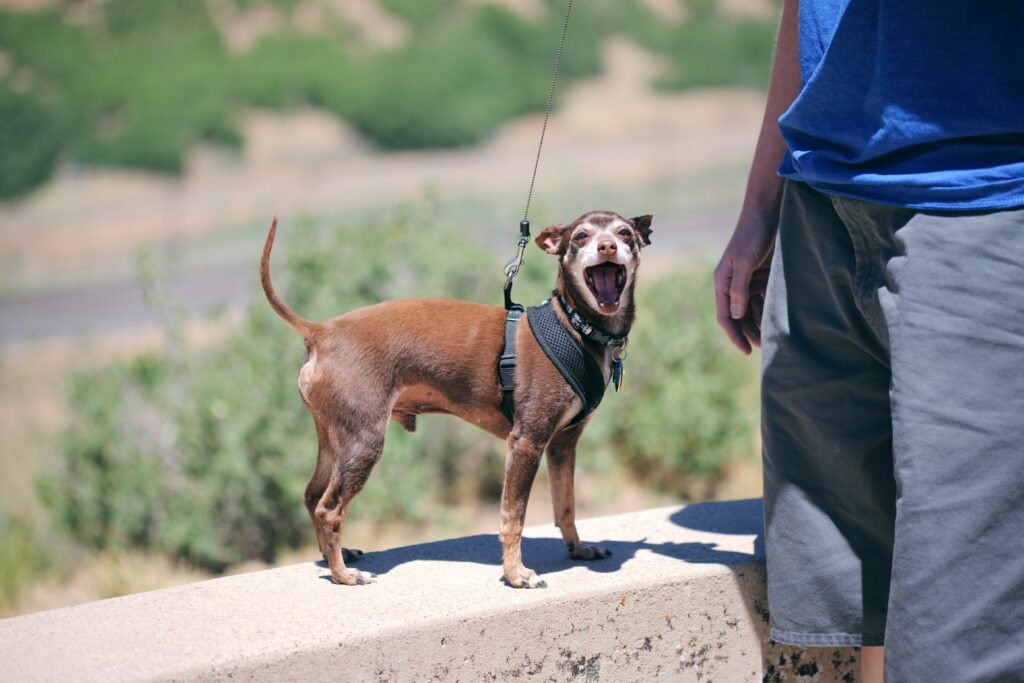
Using Tools and Accessories
Leashes and Collars
Leashes and collars are essential tools for training and managing your Chihuahua. Choose a comfortable, well-fitting collar that is neither too tight nor too loose. A harness can also be a good option to prevent strain on the neck.
Use a sturdy leash to maintain control during walks, ensuring your Chihuahua doesn’t pull or dictate the direction. Introduce the leash and collar gradually, allowing your dog to get used to wearing them before going on walks.
Always supervise your Chihuahua while they’re wearing a leash or collar to ensure safety. Consistent use of these tools helps reinforce your role as the leader and promotes good behavior.
Crates and Beds
A crate can be a useful tool for training and providing a safe space for your Chihuahua. Ensure they have a comfortable bed to retreat to when they need rest.
Toys and Treats
Use toys and treats as rewards during training. These tools can be very effective in reinforcing positive behavior and establishing dominance.
Professional Help
When to Seek a Trainer
If you’re struggling with your Chihuahua’s behavior, don’t hesitate to seek professional help. A trainer can provide valuable guidance and support.
Benefits of Professional Obedience Classes
Obedience classes offer structured training and socialization opportunities, which can be beneficial for both you and your Chihuahua.
Choosing the Right Professional for Your Chihuahua
Look for a trainer experienced with small breeds and positive reinforcement techniques. Check reviews and ask for recommendations from other Chihuahua owners.
Maintaining Long-Term Dominance
Continued Training Practices
Training doesn’t end once your Chihuahua is well-behaved. Continue practicing commands and reinforcing good behavior.
Monitoring Your Chihuahua’s Behavior
Keep an eye on your Chihuahua’s behavior. Address any issues as they arise to maintain your leadership.
Adjusting Techniques as Needed
As your Chihuahua ages or as situations change, adjust your training techniques to fit new circumstances.
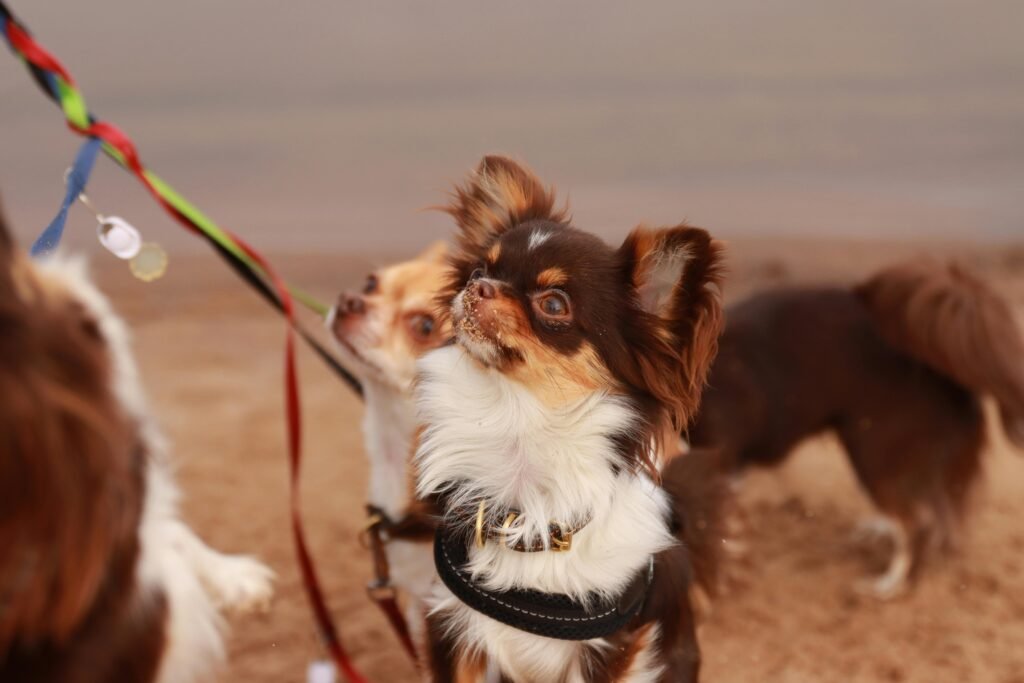
FAQs: Chihuahuas
How long does it take to establish dominance?
The time it takes can vary, but with consistent training, you should see improvement within a few weeks to a few months.
Can I show dominance without being aggressive?
Absolutely. True dominance is about leadership and consistency, not aggression.
What if my Chihuahua doesn’t respond to training?
If your Chihuahua isn’t responding, consider seeking help from a professional trainer. They can provide personalized guidance.
Is it ever too late to start training?
No, it’s never too late to start training. Older Chihuahuas can learn new behaviors with patience and consistency.
How do I know if my Chihuahua sees me as the leader?
Signs that your Chihuahua sees you as the leader include obeying commands, showing respect, and looking to you for guidance.
Conclusion
Establishing dominance over your Chihuahua is about being a consistent, fair, and loving leader. By understanding their behavior, using effective training techniques, and maintaining a strong relationship, you can ensure a happy and harmonious life with your Chihuahua.
